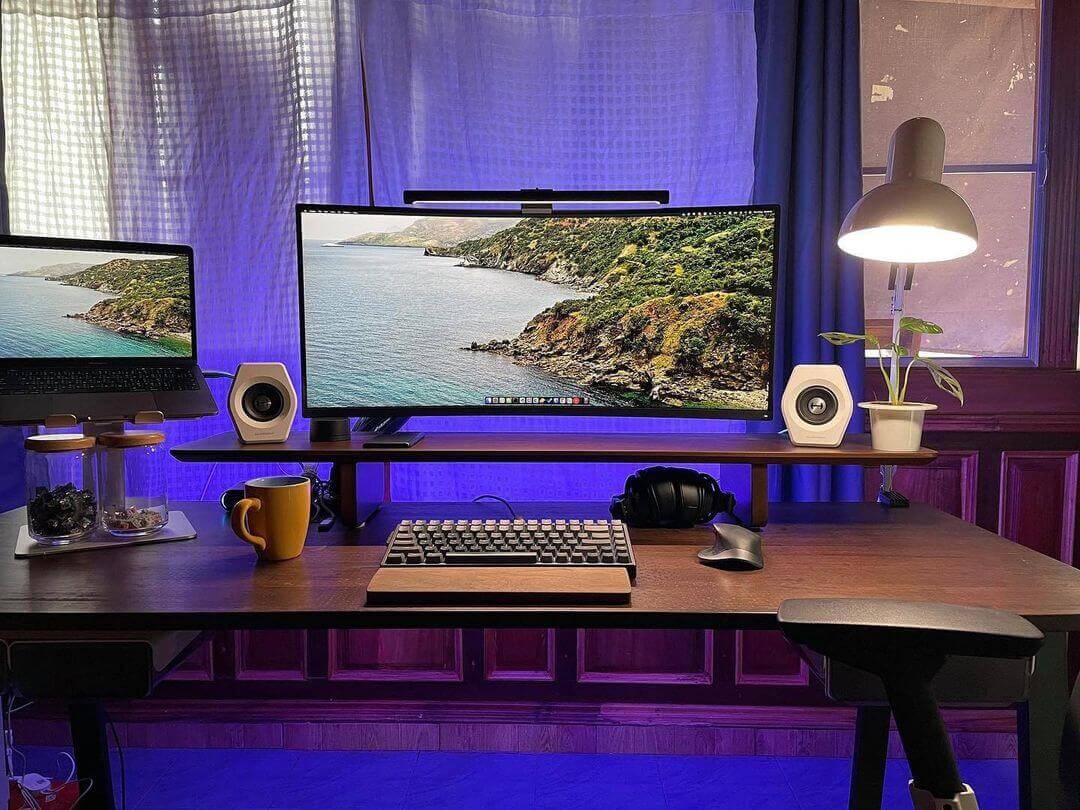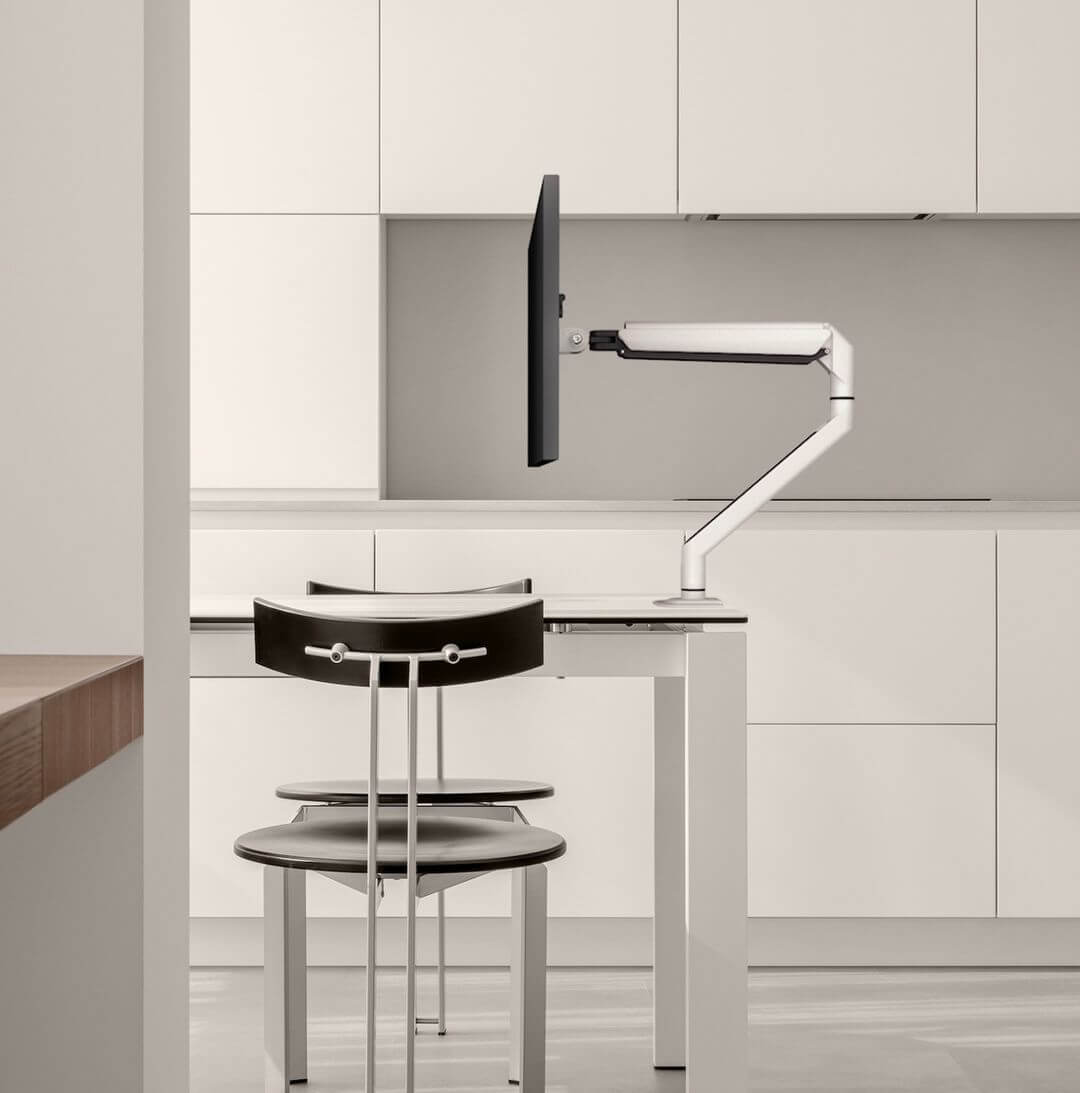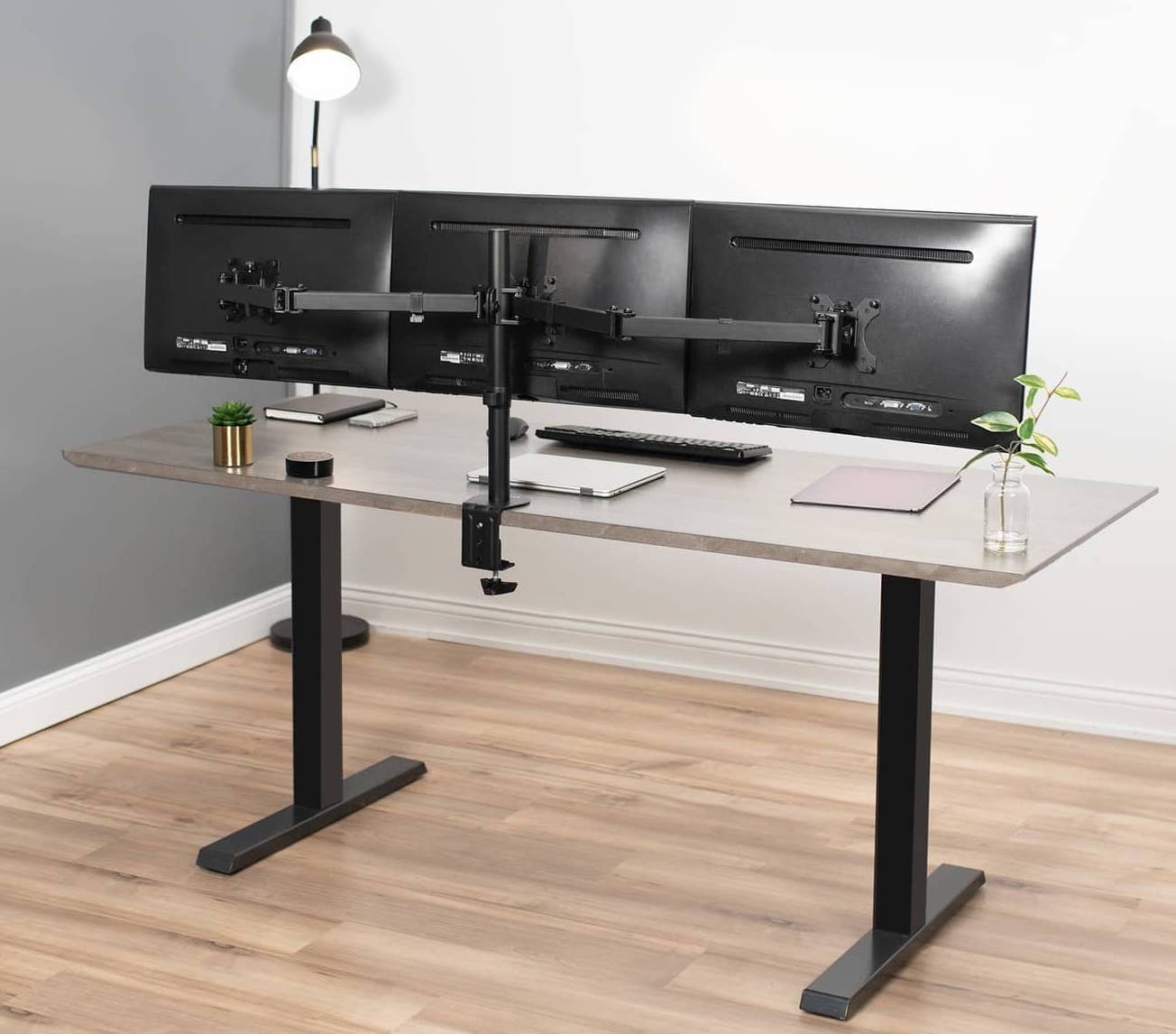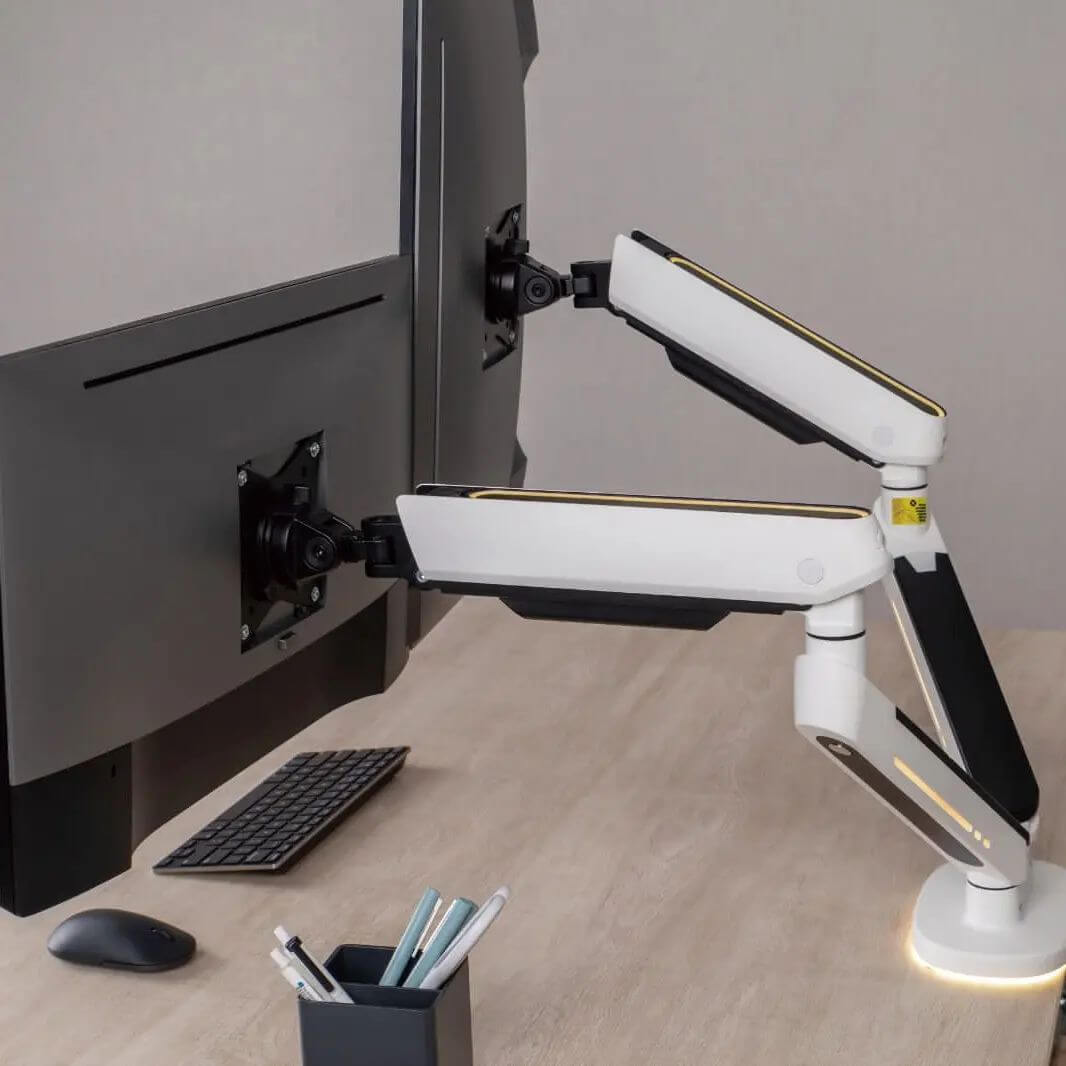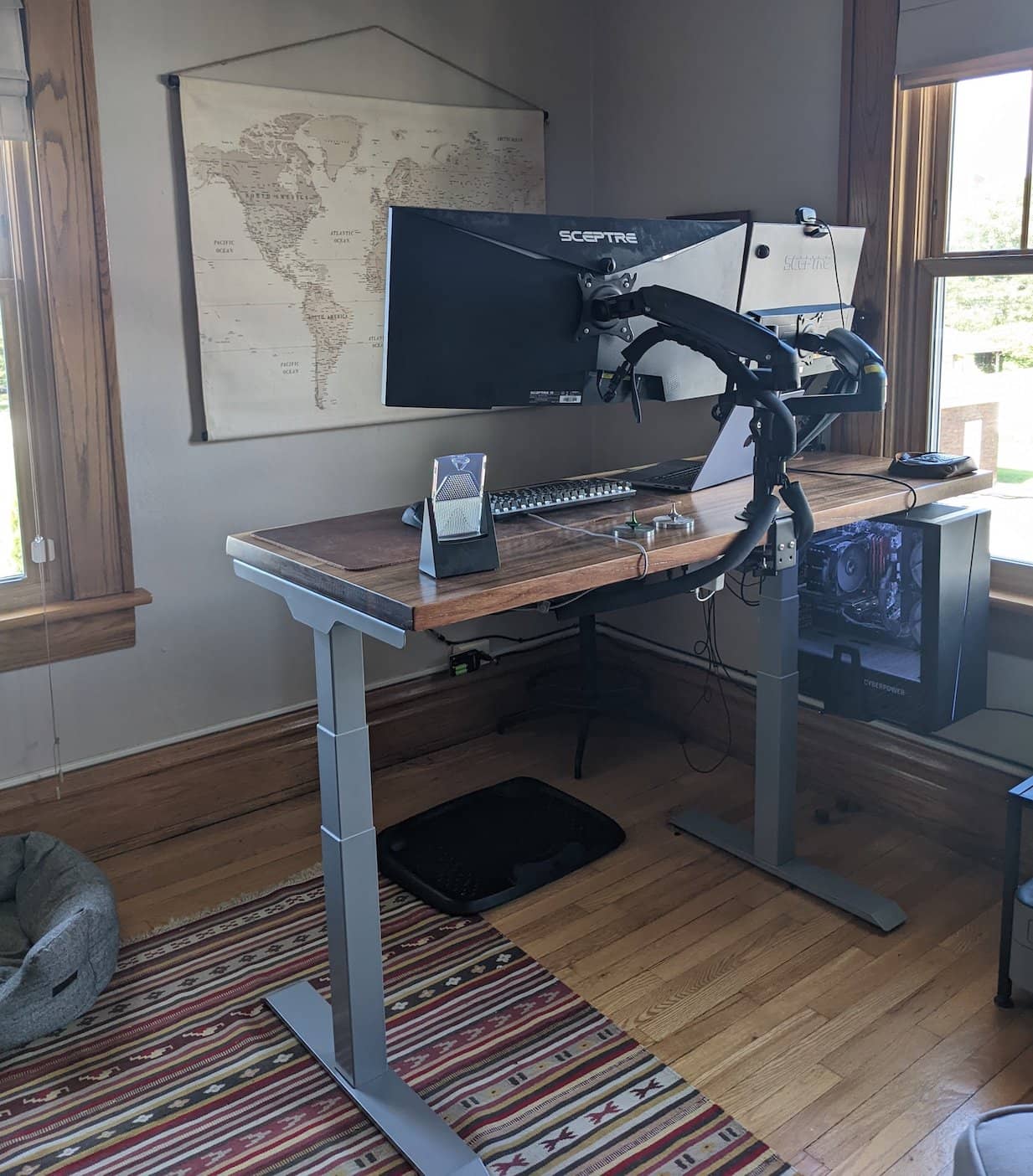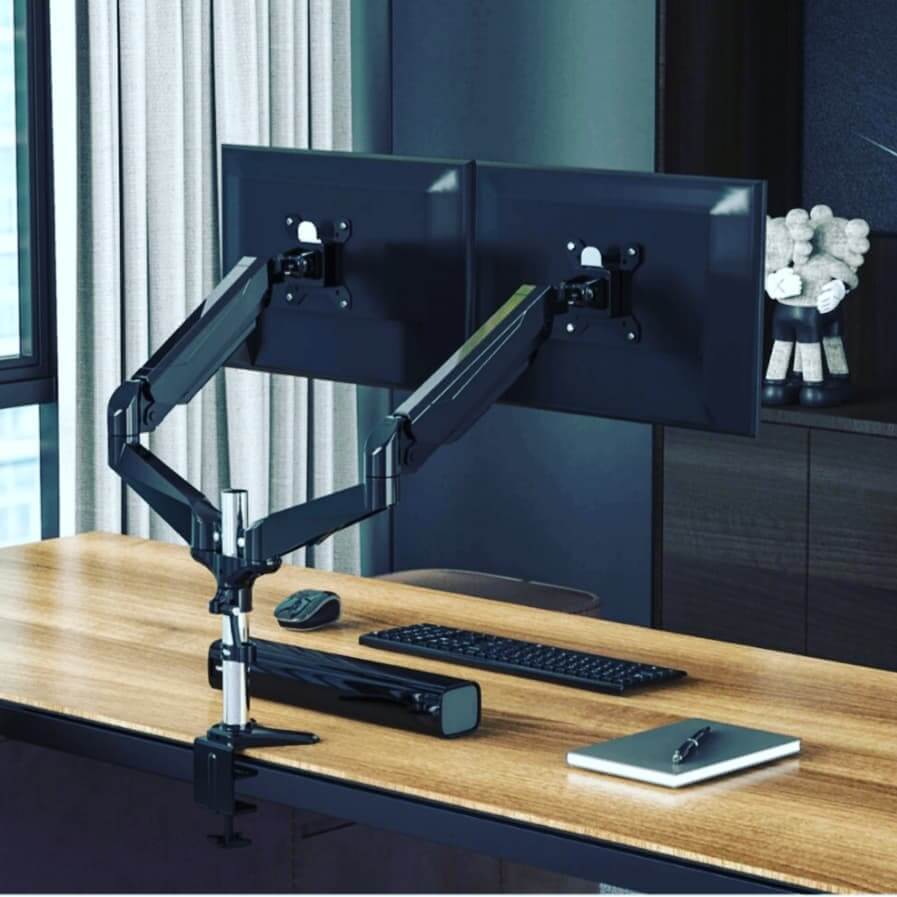
Purchasing the right monitor arm can make your life easier. But buy the wrong type and it can interfere with your productivity. And if you have a more elaborate setup and need to use two monitors at a time, you often would go for a dual arm stand.
But did you know that you can also do DIY and use two single monitor stands instead of one dual arm stand?
Yes, you can. And so the challenging question pops up, which is better to use? Which can make you more productive? And of course, which can be more cost-effective?
Let’s find out all the answers to these.
Standingdesktopper's pick
- A dual monitor stand will look cleaner
- Two single monitor stands can be heavier, but they can be more stable.
- A DIY is more stable. It is also more functional.
- Two single monitors may be better for a lot of people, but here is where it’s better to use a dual monitor stand.
- But of course, there are instances wherein a dual monitor stand may suffice or even be better.
- More facts to consider before doing a DIY with two single-arm stands
A dual monitor stand will look cleaner
With half the cables and wires you must configure, one monitor stand will look more clutter-free in your workspace.
When you have two units on your desk, you must consider having twice the cable management stuff to do.
And if your standing desk does not have a wire tray, you’ll find it a chore.
A thin and cheap cable management tray might not suffice, so even if your sit-stand desk has one, you’re still not sure if it can handle more.
Cables and ties might suffice if you only need to tuck in a few wires, But with two stands, it can look pretty obvious.
So unless you have a knack for this, then you should get a bigger cable management tray that can hold chunkier wires. So that will mean an added cost to you.
Two single monitor stands can be heavier, but they can be more stable.
Buying two units means you have to deal with the added weight compared to just buying a single unit. So if you want to do DIY, you must ensure that your standing desk is up to the additional weight.
It might be double what a dual motor stand weighs. You also have to think about how you will drill the two monitor stands to your desk. With a DIY, you need to drill more holes. Thus, if your standing desk is not heavy duty, you’ll be compromising its integrity and stability.
A DIY is more stable. It is also more functional.
This area is perhaps the number one reason many people are shifting to a DIY with two single monitor arms.
A dual monitor stand may cost less since you can buy only a single unit. And it weighs less, too, than having two monitor arms on your desk. But there are several disadvantages and inconveniences. And these, surprisingly, can be solved by using two single-arm stands.
Functionality-wise, a DIY with two single-arm stands allows you to change the height of the two monitors independently.
On the other hand, you can’t do that with a dual arm stand. The size and position of the monitors can only be changed at the same time.
Flushing the desk against a wall limits the flexibility of the monitor arm. On the other hand, you may be able to maneuver better with two single arms.
The DIY route can also be more stable. You will have less risk of shaking and wobbles. Less weight is attached to one point so it can be more durable and less likely to shake.
Two single monitors may be better for a lot of people, but here is where it’s better to use a dual monitor stand.
DIY seems to offer better if you want more functionality and freedom. Also, if you need the ease of repositioning and readjusting the monitors independently, this setup will be better.
You also have the option to attach each stand to the edge of your desk. This can also increase productivity if you’re sharing data with the table next to you.
And since the arms are less likely to bump into each other, you can change the orientation of your monitors as needed.
It can also be lighter.
So if this is more important to you, then you will be better off with a more straightforward singular setup.
It can also be an ideal setup if you need to do coding on one monitor and do another project on the other,
We also see this DIY monitor arm setup as perfect if you’re a gamer and need to do another task simultaneously.
But of course, there are instances wherein a dual monitor stand may suffice or even be better.
If you do not need to move the two monitors often, this more straightforward setup will suffice.
Or, if you need one of the monitors or both to be stationary most of the time, a dual monitor arm can be more feasible. Say you need to watch a video while you’re working on a separate task on monitor # 2, then this obtrusive setup will be better.
You can have a web page open on one monitor while you are working on another task on the other monitor. That way, you don’t need to move or reposition one or both monitors all the time.
Or you can have tech support open on monitor #1 and do a separate report on the other. So with this, you do not really need the flexibility to reposition the monitor arms.
More facts to consider before doing a DIY with two single-arm stands
This DIY can offer more flexibility. They can also handle movement and weight better. It can also give you more liberty in positioning the monitors wherever you want and need them to be. You may even mount them on opposite ends of your table.
But you also have to consider the added weight, the added cost, and more cable management tasks.
Most simple standing desks with MDF boards might not be up for this job. So this is important to consider. You have to know the capability of your standing desk, its weight capacity, and if it is amenable to having two sets of drilled holes.
Also, it would help if you had a broader and deeper desk to accommodate the two separate units.
Your desk should also not be flushed against a wall. Otherwise, you might not be able to maximize this setup.
But if this is available to you, you will find that two single arms can allow you to push the monitors far back since the elbows are less likely to bump against each other.
Related articles


